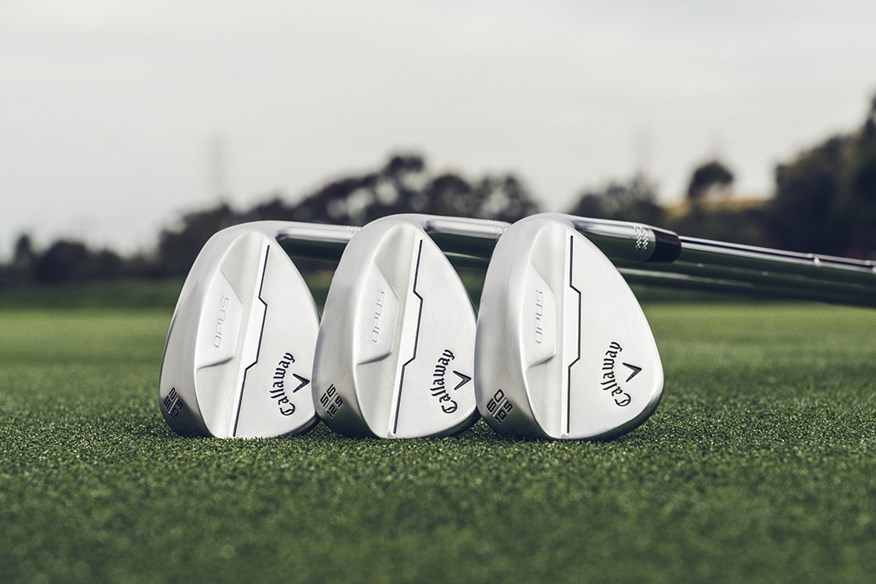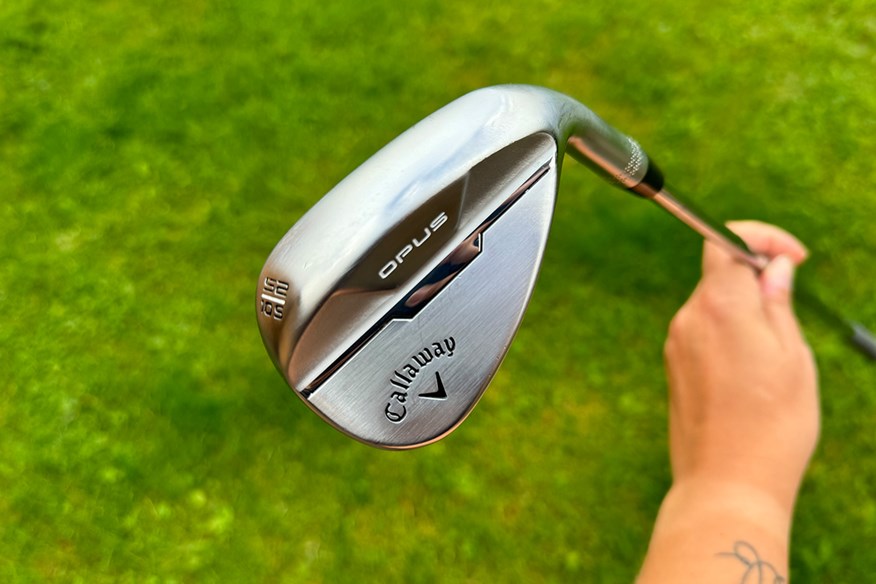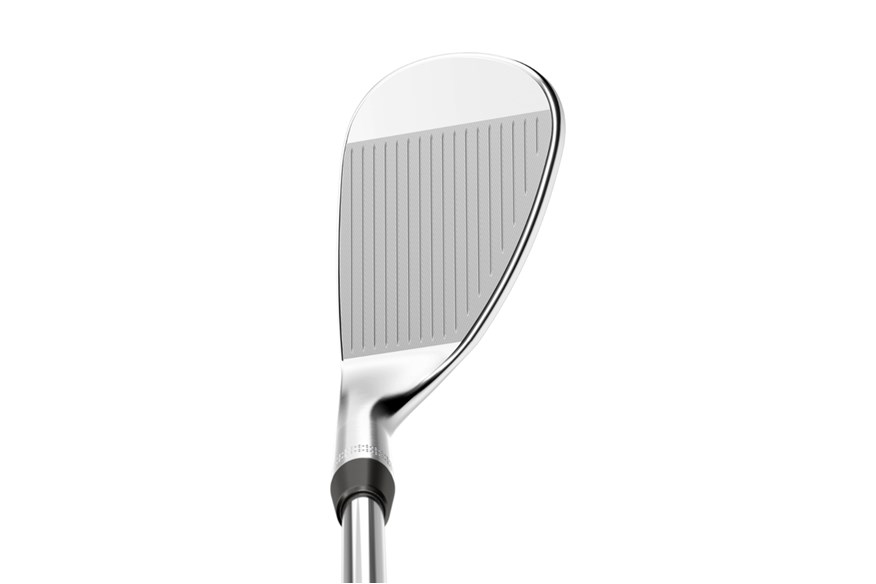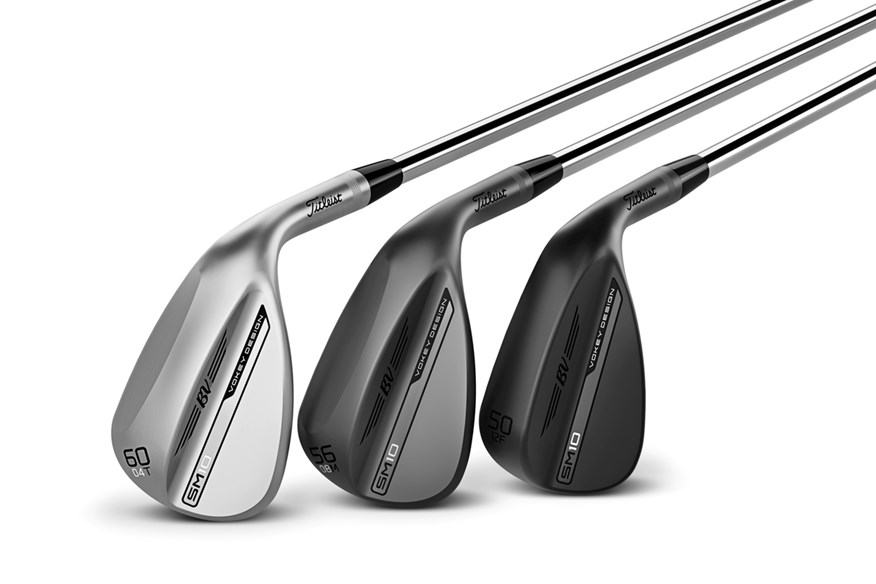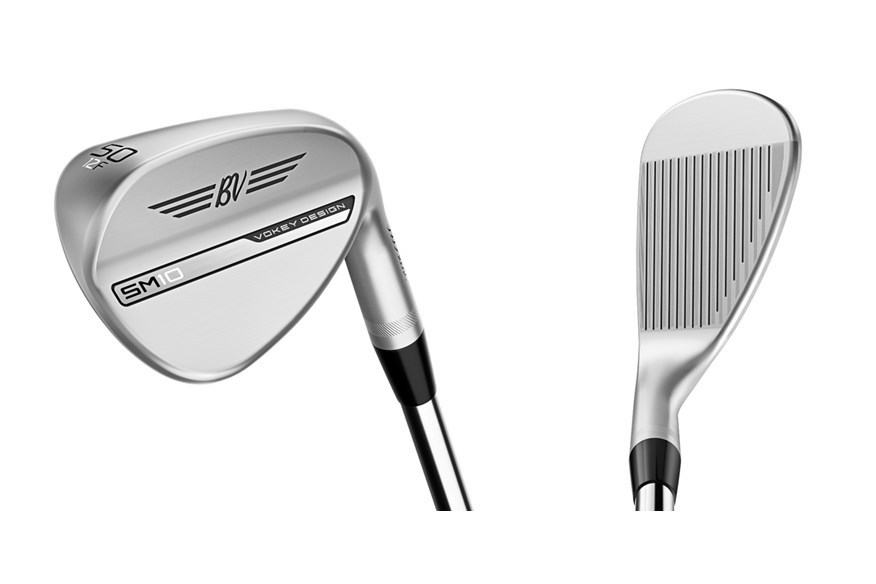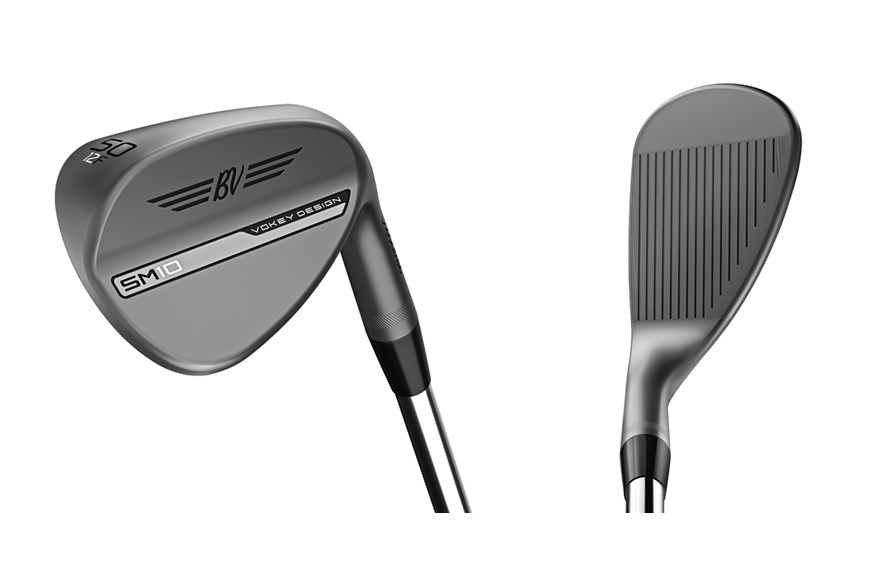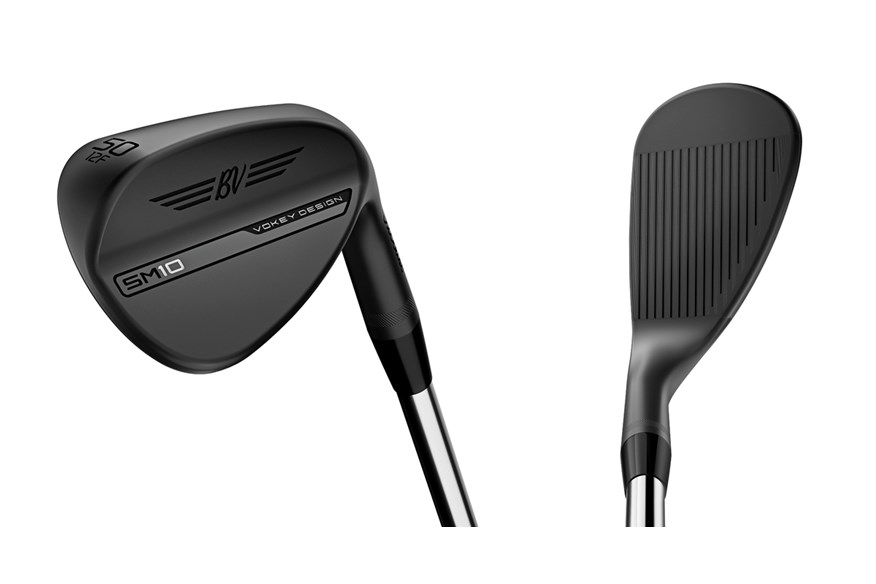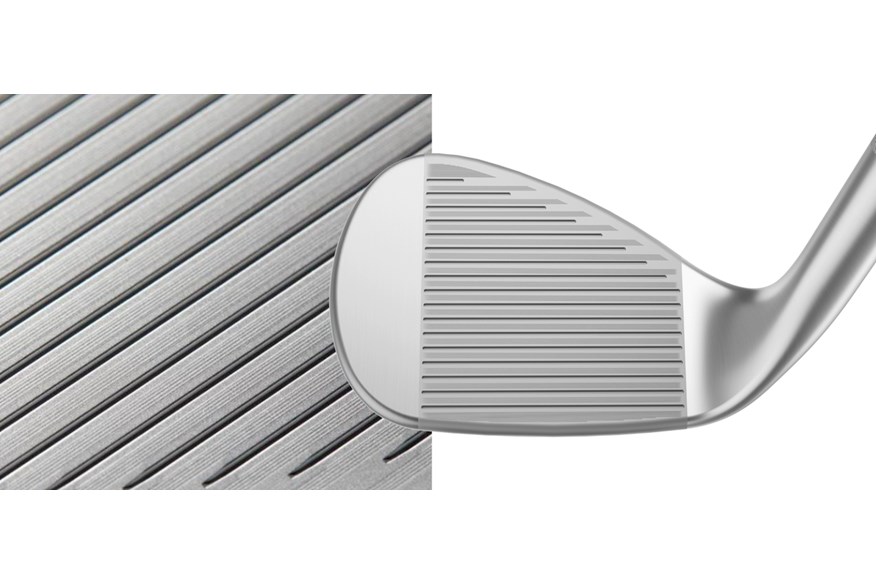The new king of spin? Callaway Opus vs Vokey SM10 Wedge Test
Last updated:
How does the new Callaway Opus wedge stack up against the market-leading Titleist Vokey SM10? My launch monitor backed test finds out.
Thanks to their massive tour endorsement Titleist Vokey Design wedges have been seen as some of the best wedges available since Bob Vokey first arrived on the scene in 1997. Recently though Callaway has introduced the Opus, a wedge family designed over the last 18 months with input directly from their tour stars. The Opus boasts three new face technologies to enable golfers to hit higher spinning but lower flighted shots for additional control. The concept has gone down so well with tour stars Xander Schauffele, Jon Rahm, Rose Zhang, and Co that Callaway says Opus is their most tour-validated wedge ever. We naturally wanted to see how the new model performs for ourselves so we’ve put the model head to head in a Callaway Opus versus Vokey SM10 wedge test to see if we can help you identify where your wedge money should be spent this year. Here’s what happened…
How we tested the wedges
We asked Titleist and Callaway to send us a brand new un-hit 52° wedge from each product family, we put both in the hands of TG Test Pro Neil Wain.
We created an indoor test lab at Keele Golf Centre to ensure a controlled environment, which meant we could use premium Titleist Pro V1x golf balls and a Foresight GC Quad launch monitor to create the most reliable data possible.
We rejected major misses but recorded how shots launched, span, peaked out, and how far they flew in which direction. To ensure we got an overall picture of how each wedge family performs Neil also hit a 58° wedge from each brand too. As these heads had previously been used our data charts below don’t show any backspin for this loft as we couldn’t be sure how much wear and tear either had been exposed to.
See more about how TG tests golf clubs and other equipment.
The Wedges
Pros
- Very high spin
- A lower more controllable ball flight
- The Platinum model offers Hi-Toe wedge performance in a regular shape
Cons
- The profile is a little rounded
| Lofts | 48° / 50° / 52° / 54°/ 56° / 58° / 60° |
| Sole Grinds | S / W / C / T |
| Finishes | Brushed Chrome, Black Shadow |
| Stock shaft | True Temper Dynamic Gold Mid 115 |
| Stock grip | Golf Pride Tour Velvet 360 |
Shape, profile, looks
Wedge maestro Roger Cleveland’s fingerprints have been all over Callaway wedges since joining the company in 1996, interestingly his name is not associated with the new Opus models in any way. Instead, the company says the slightly more rounded Opus profile is a direct request from their tour staffers. The shape, profile, and new Spin Gen Face tech have been tested, refined, and retested by the brand’s stars over the last 18 months, to such an extent the sixth different head design has ended up lending its shape to this new model.
I feel terrible saying rounder wedge profiles can be an acquired taste that neither myself nor TG Test Pro Neil Wain particularly adore. Just because the shape isn’t to our preference though doesn’t make the Opus a bad wedge. I completely appreciate some golfers find a slightly curved leading edge gives the impression of being able to slip the wedge under the ball more easily, so my advice would be to make sure you like their look because there is some difference between the Opus and Vokey SM10.
Today’s Golfer score: 8/10
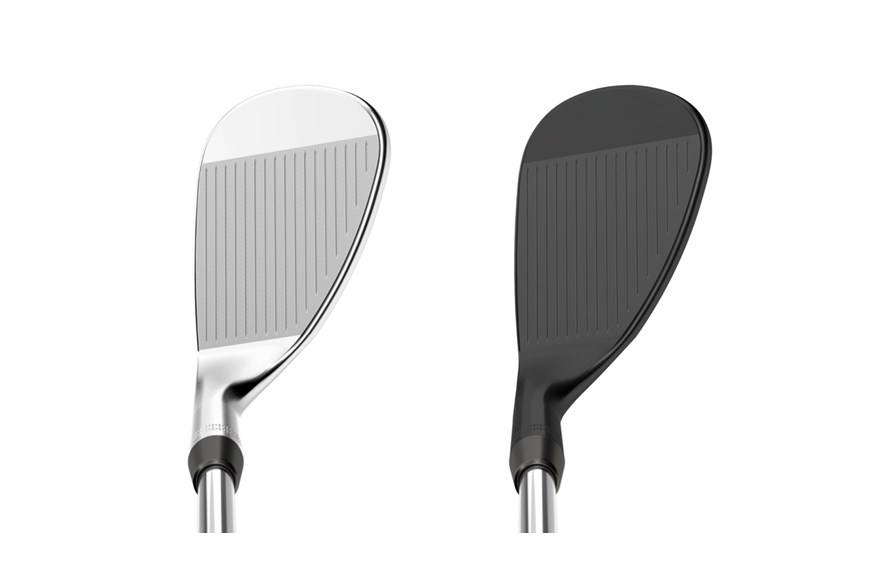
Feel and feedback
During their internal testing phase, Callaway saw the new surface roughness of the Opus face (see explanation below) led to shots launching 5° lower than their previous Jaws Raw wedge with extra spin, and not only does our test data support their thinking, we also didn’t need a launch monitor to spot how the model delivered a significantly lower ball flight in the real world.
Never before have I seen a wedge offer such a difference in ball flight over a market leader and deliver so overwhelmingly on its lower launch promise. Using a 52° loft our test pro launched shots 3.6° lower (which rose to 7.3° lower with the 58° loft), with more spin (see below) and a shallower landing angle than the SM10. Traits that loads of decent players would adore, as higher floating wedge ball flights are often considered less controllable.
Neil also loved the impact sensation on full shots, saying “I wouldn’t be able to feel any difference between the Opus and SM10 if I were blindfolded”.
Today’s Golfer score: 10/10
Spin
No brand ever sets out to make a low-spinning wedge, but golfers should also never just focus on buying the highest-spinning wedge as spin consistency is a much more important ingredient for scoring. Thanks to reducing the spacing between each groove the Opus gets more sharp groove edges in contact with the ball which lowers trajectory and enhances spin. A new coarser quartz blast also penetrates the face adding extra surface roughness for increased friction between the club and ball. From our experience, Callaway’s engineers have essentially turned the Opus into a spin machine.
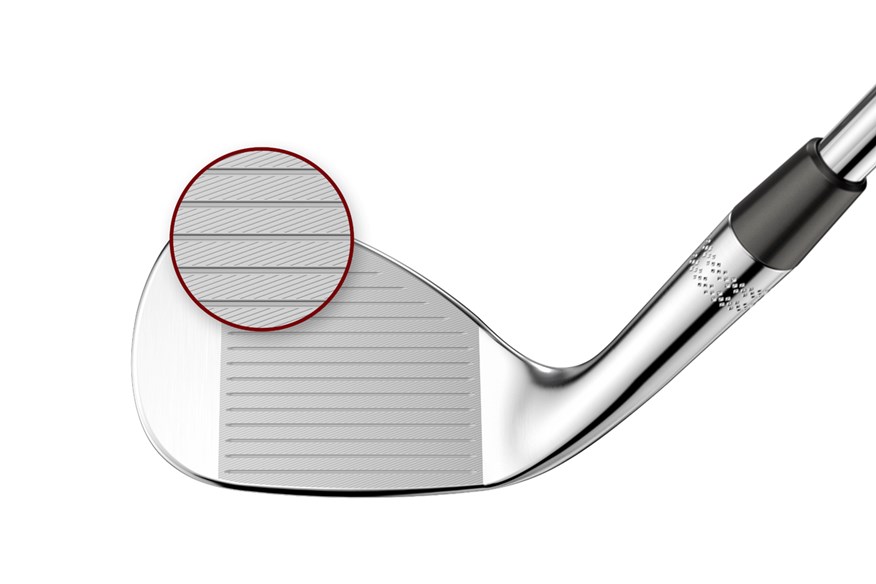
Our test data shows the Opus spinning 1000 RPM more than the SM10 (with a 52° loft), but you should also know Callaway’s internal testing has shown the new three-pronged attack on spin (more grooves, new face blast, and angled micro-grooves) adds up to 500 RPM of extra spin from the rough, and an additional 1200 RPM in wet conditions over and above the previous Jaws Raw. So effective was the Opus during our launch monitor test session a number of shots landed and backed up on our display screen which we hadn’t seen before.
Today’s Golfer score: 10/10
Price and options
You can always spot which brands are serious about wedges as they’ll make a ton of different options even though they know sales of certain lofts, grinds, and finishes will be tiny. With seven lofts, four sole grinds and two finish options it doesn’t take a genius to spot Callaway is very keen to be your wedge of choice in 2024 and beyond. The options don’t stop there.
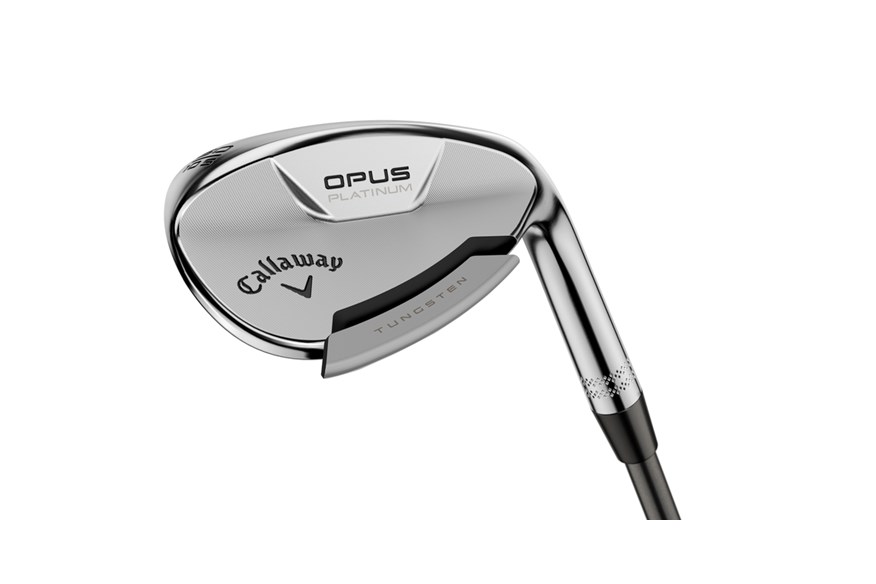
The new Opus Platinum, a model designed without the constraints of cost has 17g of tungsten positioned along the top edge to produce a High-Toe wedge-like performance (lower shot height and more spin) from a regular-shaped head, which I believe is a very strong idea. Of course, the Platinum will set you back another £50 per club (£229 vs £179) but particularly in the higher lofts I can see a place for its performance benefits.
Today’s Golfer score: 9/10
Verdict: Callaway Opus Wedge
Callaway has intelligently seeded the Opus out on tour throughout their 18-month development, under the guise of Jaws Raw with an S6 (Shape 6) stamping, the thinking has meant as soon as the franchise was revealed models have already been embedded in players’ bags. Tour validation is a key part of selling masses of wedges hence why Titleist put so much effort into getting Vokey models in so many players bags. Even if Callaway hadn’t put in the groundwork my gut feeling is the Opus would have seen success. My thinking boils down to the Opus truly offering something different from the norm, and lots of reasonable and decent players will enjoy the model’s lower launch and higher spin tendencies.
You will of course need to like the slightly rounder profile, it’s more noticeable in the higher lofts, but should not be a deal breaker until you’ve looked at the shape in the real world. For club golfers, I’m a big fan of the slightly lighter Dynamic Gold Mid 115 shaft which so long as you’re not playing heavy tour weight iron shafts will mean less of a weight/feel gap into your wedges. Based on this performance I fully expect the Opus to feature among the best-performing wedges of 2025 when we test every model on the market over winter.
Today’s Golfer overall score: 37/40
Pros
- A well-proportioned wedge profile
- Good feel and feedback
- Consistent spin performance
Cons
- Don't think Vokey wedges are forged, they are cast from 8620 carbon steel
| Lofts | 46° / 48° / 50° / 52° / 54° / 56° / 58° / 60° |
| Sole Grinds | F / D / M / S / T / K |
| Finishes | Tour Chrome, Jet Black, Nickel |
| Stock Shaft | True Temper Dynamic Gold S200 |
| Stock Grip | Titleist Universal 360 |
Shape, profile, looks
Wedges are really personal pieces of equipment one man’s pleasure really is another’s poison, hence why every year Bob Vokey produces tons of bespoke wedges for various different tour players. It’s always difficult to say one wedge head shape is perfect as it’s highly likely not to be perfect for everyone. But at this point in time to my mind, the SM10 head shape is as perfect as wedges come.
I like how over a few generations it feels like Vokey wedges have lost a little bit of blade length, yet they’ve managed not to become frighteningly small. Without a doubt, my eye would be choosing this shape over the Opus.
You’ll need a keen eye to spot it but no matter which sole grind you opt for the SM10s all now have the same blade length and profile, the idea means you get the same look at address no matter what your wedge set-up, which seems like common sense but it’s the first time Vokey have matched up their wedges with a common look in this way.
Today’s Golfer score: 9/10
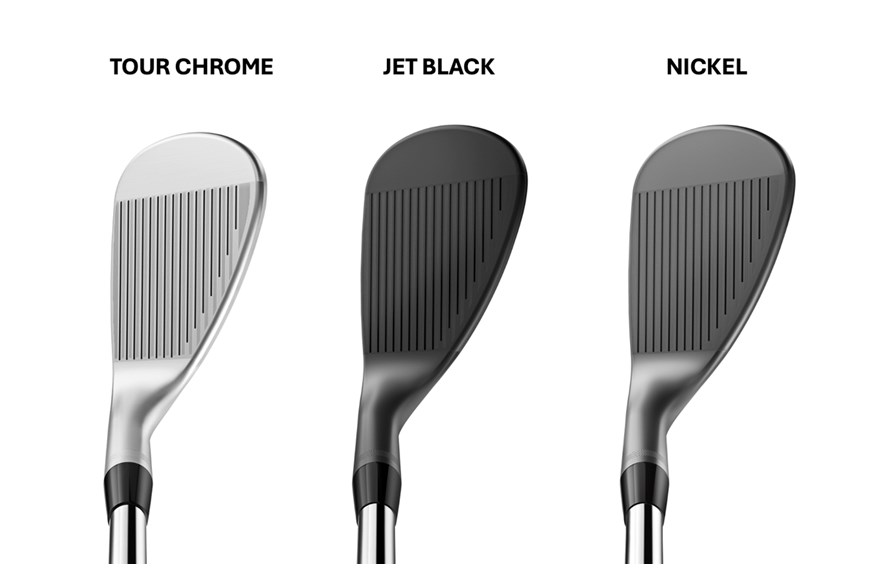
Feel and feedback
It’s tickled me for years that so many club golfers insist they need to play the best-forged players’ irons as they ‘feel or sound’ better, and then blindly choose Vokey wedges to compliment their short game without realizing the heads are cast not forged. This isn’t a Vokey bash, most of the wedges made by top brands today are cast, just be aware the SM10s are cast from 8620 carbon steel as the material is easier to work with and offers up extra versatility during the manufacturing process.
I’ve enjoyed playing SM10 wedges since the turn of the year and throughout our test session TG Test Pro Neil Wain thought the impact feel and feedback was as good as any wedge he’s hit this year. Interestingly Vokey says golfers should aim to hit shots between the 2nd and 5th face groove as this area produces a lower more consistent flight with extra spin, where shots hit above this zone are prone to flying higher with less stopping power.
Today’s Golfer score: 10/10
Spin
Here at TG, we’ve been testing Vokey wedges for decades during which time we’ve spotted that Vokey wedges are very rarely the highest-spinning models out there. You shouldn’t worry too much about identifying and buying the highest spinning wedge as consistent spin when shots are hit at different locations across the face, is much more preferable for scoring. However, our test data shows the SM10 on this occasion offered up 10% less backspin than the Opus, and during our Best 2024 Wedge test, it also produced 14.7% less stopping power than the highest-spinning Vega VWX model.
From my experience you won’t have any issues stopping shots with the SM10, the TX9 grooves are all individually cut and 100% QC inspected, just bear in mind though that Titleist’s own research has shown grooves begin to show signs of wear and tear after 75 rounds.
Today’s Golfer score: 9/10
Price and options
Vokey wedges have been the costliest mainstream wedges for decades, recently though other brands have crept up to their level. Three SM10s (I’d advise buying wedges as a set) will set you back £507 which is a sizeable investment, but in reality, it’s not too dissimilar to the best drivers, and arguably maximizing your short-game potential will produce lower scores than optimizing your driver game.
In much the same way that Scotty Cameron is a putter brand under the Titleist umbrella, Vokey Design is very much a wedge brand in its own right, which means huge amounts of resources can be plowed into creating options to suit every player’s request on the planet, a luxury not bestowed upon every mainstream brand. If it’s options your game needs Vokey has them in abundance.
It doesn’t take long for too many options to become overwhelming, so I’d seriously advise if you’re looking to optimize your short game with new Vokey wedges seek out the help of a certified fitter. For 2024 Titleist has a brand-new wedge fitting app that works with a Trackman launch monitor to recommend lofts, sole grinds, and the spec of wedges that could benefit your style of attack and how you play short game shots. If you don’t take advantage of the service and buy blindly off the rack I think you’re missing out.
Today’s Golfer score: 9/10
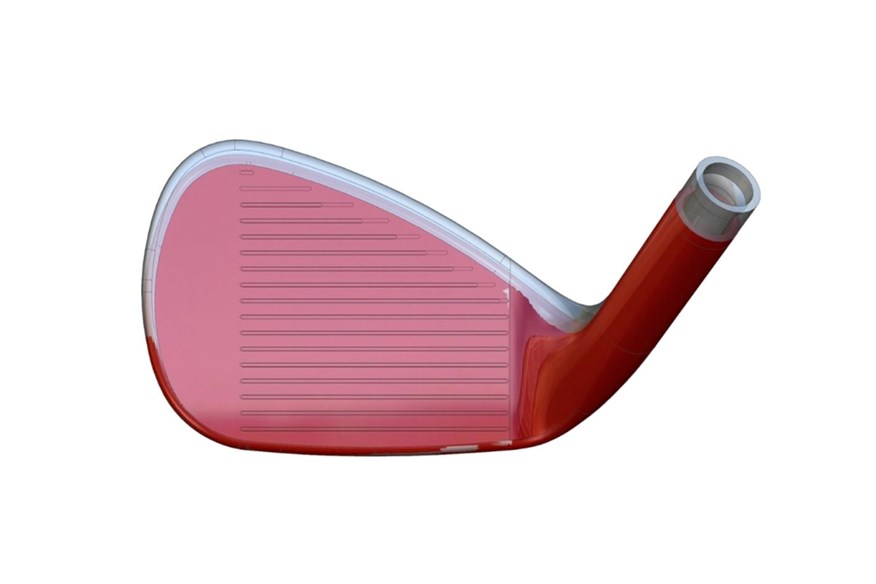
Verdict: Titleist Vokey Design SM10 Wedge
I’ve been saying for several years now if you play cavity back irons your journey into new wedges has to start with asking yourself if you can accept cavity back wedges. If you can the Cleveland CBX 4 are the best that money can currently buy. If however, you swear tour-level blade-style wedges are your best option then absolutely the SM10s are right at the top of the tree.
The SM10s are beautifully crafted, they’re super simple in their design as wedges should be so you can focus on getting up and down more often. I’m a huge fan of the new Nickel finish (probably because I’ve played Ping iWedge’s for years) it’s been durable over time and continues to age really nicely, so don’t just plump for the most popular Tour Chrome.
Even though the Opus and SM10 have racked up the same amount of points in this test, and while I love the idea of the lower launch and extra spin of the Callaway, based purely on the profile and shape (which is really important to me) I’d probably be slightly more willing to spend my own money on the Vokey’s in 2024. If you love the Opus shape then absolutely they offer gains in ball flight and spin that you will love.
Today’s Golfer overall score: 37/40
Data comparison: How the Opus and SM10 wedges compare in numbers
| Wedge | Loft | Ball Speed | Launch Angle | Backspin | Height | Descent Angle | Carry Distance |
| Callaway Opus | 52° | 87.4 MPH | 25.9° | 9433 RPM | 24 YDS | 47.4° | 110 YDS |
| Vokey Design SM10 | 52° | 85.2 MPH | 29.5° | 8485 RPM | 26 YDS | 48.8° | 108 YDS |
| Callaway Opus | 58° | 72.1 MPH | 29.7° | N/A | 18 YDS | 45.8° | 84 YDS |
| Vokey Design SM10 | 58° | 69.9 MPH | 37° | N/A | 22 YDS | 50.1° | 82 YDS |
Explained: Callaway Opus Sole Grinds
S Grind – A grind for every situation, fits a variety of swing types, best for players who hit lots of square face shots.
W Grind – A full sole grind. This wide sole option is for players who will appreciate extra wedge forgiveness. Most suited to deeper divot takers and softer ground.
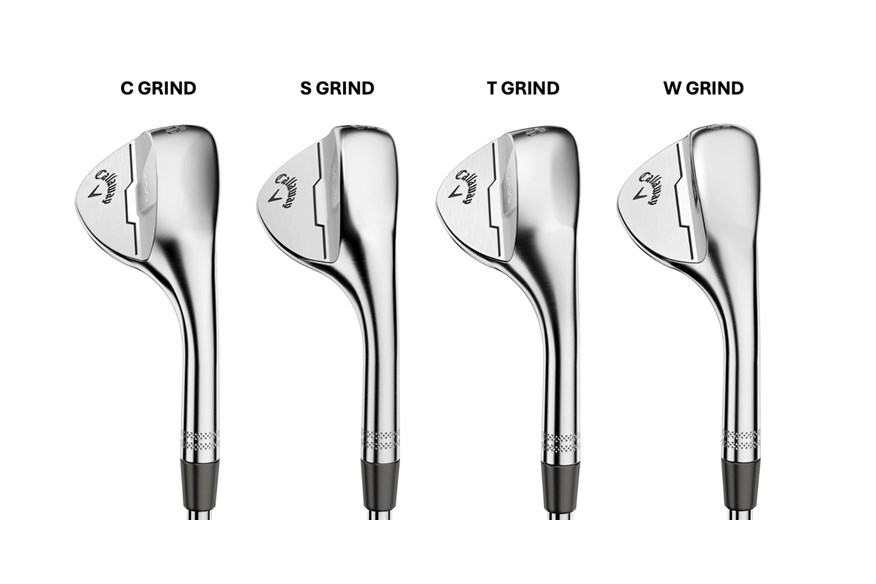
C Grind – offers up maximum greenside versatility, especially useful when playing open-face shots.
T Grind – Much like the versatile C Grind sole but with less bounce. The T requires precise shot-making skills for golfers who like keeping the leading edge low to the ground. Most suited to shallower divot takers and firmer ground.
Explained: Titleist Vokey Design SM10 Sole Grinds
F Grind – The F Grind is an all-purpose option, it’s well suited to full shots and shots hit with a square club face. The F is the most played sand wedge grind on tour, it’s ideal for golfers who like a traditional sole on their wedges.
M Grind – The M is Bob Vokey’s favorite grind, it is for players who like to rotate the club face open or closed to manufacture shots around the green. The M is most suited to golfers with shallower attack angles and those with more sweeping-type motions.
S Grind – The S has a narrower sole width thanks to the trailing edge being beveled which gives a faster feel through the turf, due to less resistance. A good option for firm to neutral turf types and players who like to control loft with their hands either ahead or behind the ball.
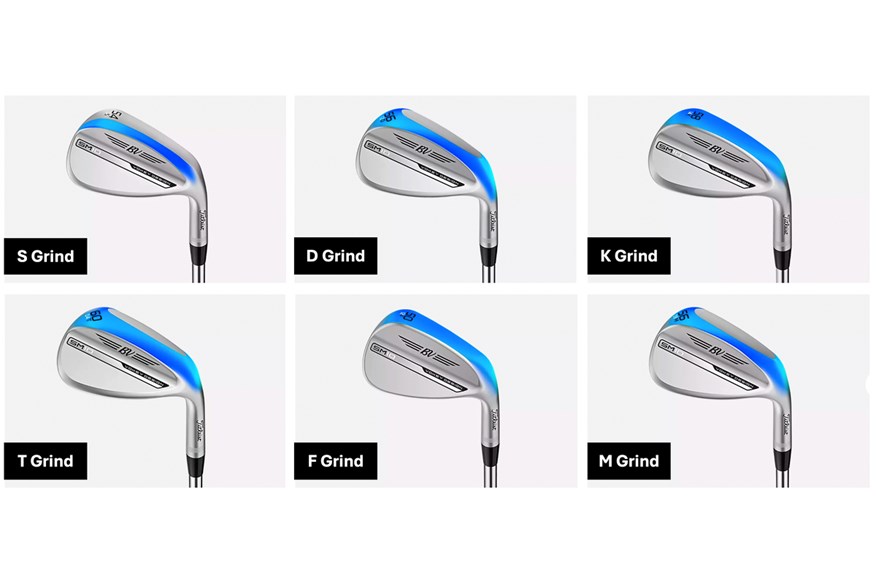
D Grind – The players’ high bounce wedge. Heel, toe, and trailing edge relief (bevelling) offer up lots of versatility from a high bounce sole. A good fit for steeper angles of attack and golfers who play shots with a variety of open and closed clubface positions.
K Grind – The ultimate soft conditions wedge. The K has the highest bounce in the SM10 line-up, and it’s a great bunker grind. A wide, full sole with increased camber is forgiving from softer sand and turf conditions.
T Grind – A low bounce option with lots of toe, heel, and trailing edge relief. The T is for precise players looking for sharper shotmaking and ultimate greenside versatility.
-
 The Callaway Opus and Titleist Vokey Design SM10 Wedges
The Callaway Opus and Titleist Vokey Design SM10 Wedges
-
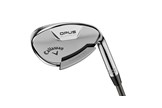 A graphic to show the 17g of tungsten positioned in the top edge of the Callaway Opus Platinum Wedge
A graphic to show the 17g of tungsten positioned in the top edge of the Callaway Opus Platinum Wedge
-
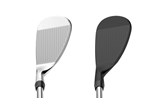 How the Callaway Opus Brushed Chrome and Black Shadow wedge finishes look at address
How the Callaway Opus Brushed Chrome and Black Shadow wedge finishes look at address
-
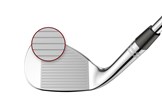 A close up of the extra groove, new face blast and angled micro grooves on the Callaway Opus wedge
A close up of the extra groove, new face blast and angled micro grooves on the Callaway Opus wedge
-
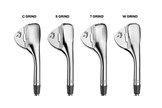 A graphic to show the difference in shape between the four Callaway Opus wedge sole grinds
A graphic to show the difference in shape between the four Callaway Opus wedge sole grinds
-
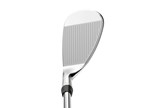 The Callaway Opus wedge in the play position
The Callaway Opus wedge in the play position
-
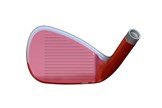 A graphic to show the shape difference between the Vokey SM9 and SM10 wedges
A graphic to show the shape difference between the Vokey SM9 and SM10 wedges
-
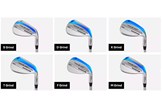 A graphic to show the six different Titleist Vokey Design SM10 sole grinds
A graphic to show the six different Titleist Vokey Design SM10 sole grinds
-
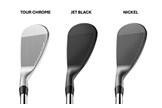 A graphic to show all three Titleist Vokey Design SM10 wedge finishes
A graphic to show all three Titleist Vokey Design SM10 wedge finishes
